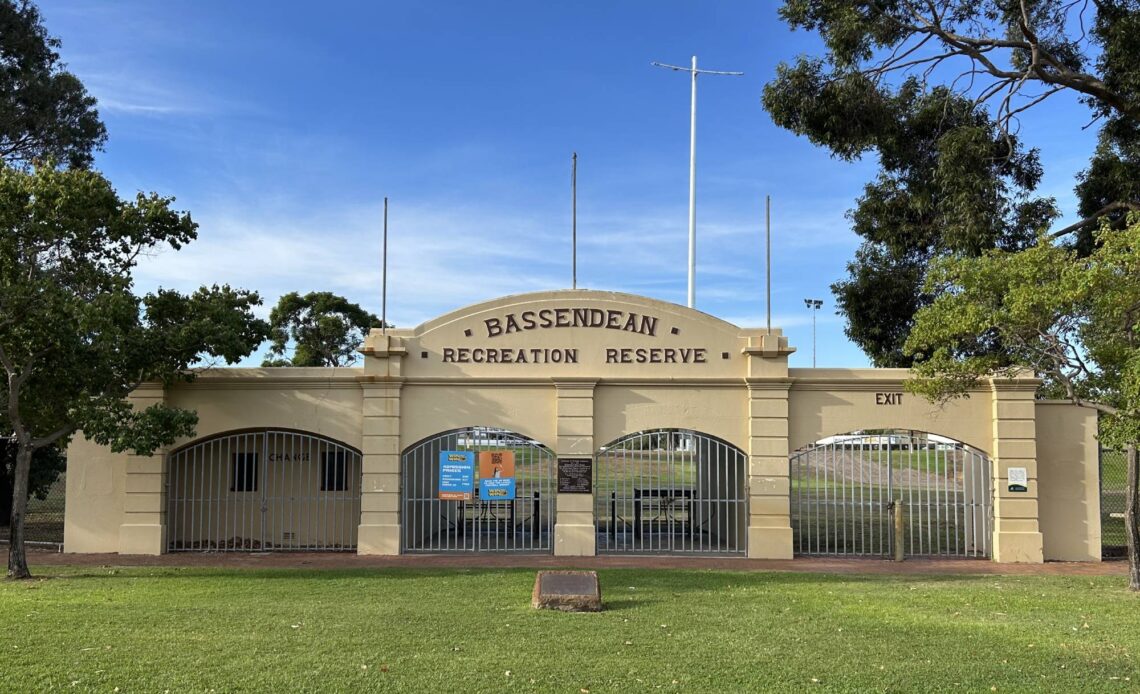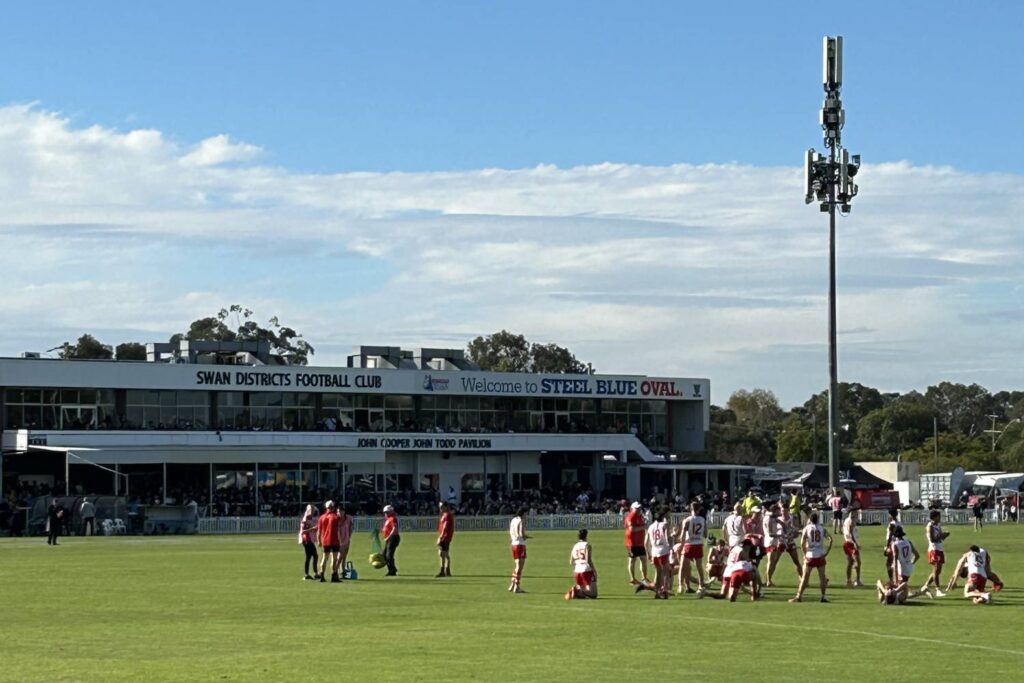
Nestled in the heart of Bassendean, Western Australia, Bassendean Oval—also known as Steel Blue Oval—is more than just a sports venue; it’s a cherished piece of local history. Since its official opening in 1929, the oval has been a hub for Australian rules football, hosting countless matches and fostering a deep connection with the community.
A Legacy of Football
Bassendean Oval has been the proud home of the Swan Districts Football Club, a Western Australian Football League (WAFL) team, since 1934. The stadium has witnessed thrilling victories, heartbreaking losses, and unforgettable moments that have shaped the club’s legacy. With a capacity of 22,000, it has hosted some of the most electrifying WAFL matches, including a record-breaking crowd of 22,350 for a clash between Swan Districts and West Perth in 1980.
The History of Bassendean Oval: A Legacy of Sport and Community
Bassendean Oval, also known as Steel Blue Oval, is a historic sporting venue located in Bassendean, Western Australia. Since its establishment in 1929, it has been a cornerstone of Australian rules football and a gathering place for the local community.
Early Beginnings
The oval was officially opened in 1929, marking the beginning of its long-standing role in Western Australian sports. It quickly became the home ground for the Swan Districts Football Club, which joined the Western Australian Football League (WAFL) in 1934.
Growth and Development
Over the years, Bassendean Oval underwent several upgrades to accommodate growing crowds and improve facilities. The McDonald Grandstand, built in 1938, became famous for the foot-stomping tradition of Swan Districts fans, creating an electrifying atmosphere on game days. The Bill Walker Stand, another key structure, was added later to enhance spectator experience.
Record-Breaking Moments
One of the most memorable events in the oval’s history was the 1980 WAFL match between Swan Districts and West Perth, which drew a record crowd of 22,350 spectators. This remains the highest attendance ever recorded at the venue.
Heritage and Community Significance
Bassendean Oval is recognised for its heritage value, with its main entrance gates and timber grandstands listed as significant historical structures. Situated on Old Perth Road, the oval remains a landmark in Bassendean, contributing to the town’s identity and sense of community.
From thrilling football matches to unforgettable concerts, Bassendean Oval has cemented its place as a historic and cultural icon in Western Australia. Whether you’re a sports fan or a history enthusiast, this venue continues to be a cherished part of the local landscape.
Architectural & Heritage Significance
Beyond its sporting history, Bassendean Oval boasts several heritage-listed structures. The main entrance gates, built in 1929, along with the timber grandstands constructed in 1932 and 1938, stand as testaments to the oval’s rich past. The McDonald Stand, famous for the foot-stomping of passionate Swan Districts fans, adds to the stadium’s unique character.

AFL game at the Bassendean Oval
Swan Districts Football Club: A Legacy in Western Australian Football
The Swan Districts Football Club, affectionately known as the Swans, has been a cornerstone of Western Australian Football League (WAFL) history since its formation in 1933. Based at Steel Blue Oval in Bassendean, the club has built a reputation for resilience, community engagement, and thrilling football moments.
Swan Districts was established as a successor to the Midland Junction Football Club, which had disbanded during World War I. The Swans officially joined the WAFL in 1934, marking the beginning of their journey in Western Australian football.
The club has secured eight WAFL premierships, with dominant performances in the 1960s, 1980s, and 2010. Their first premiership came in 1961, followed by back-to-back victories in 1962 and 1963. The Swans repeated this feat in the 1982, 1983, and 1984 seasons, cementing their status as a powerhouse. Their most recent triumph was in 2010, proving their ability to remain competitive across generations.
Notable Players and Achievements
Swan Districts has produced some of WAFL’s finest players, including Bill Walker, who won the Sandover Medal four times (1965, 1966, 1967, 1970), and Andrew Krakouer, who claimed the medal in 2010. The club has also seen players like Simon Beasley dominate the goal-kicking leaderboard, with a record 119 goals in 1981.
Beyond football, Swan Districts is deeply involved in community programs, focusing on education, employment, and social engagement. Their VSwans initiative extends their impact beyond Bassendean, reaching communities in the Pilbara and other regions of Western Australia.
With a strong foundation and a commitment to excellence, Swan Districts continues to be a vital part of WAFL. Whether through thrilling matches, community outreach, or developing future football stars, the Swans remain a symbol of passion and perseverance in Western Australian football.
More Than Just Football
While football is its lifeblood, Bassendean Oval has also played host to major music festivals, including Big Day Out from 1997 to 2001 and Soundwave Festival in 2009 and 2010. These music events brought thousands of music lovers together, showcasing the oval’s versatility as a cultural venue.
A Community Icon
Situated on Old Perth Road, Bassendean Oval is more than just a stadium—it’s a symbol of local pride. Whether it’s the roar of the crowd on game day or the quiet nostalgia of its historic grandstands, the oval continues to be a beloved gathering place for sports fans and the Bassendean community alike.
